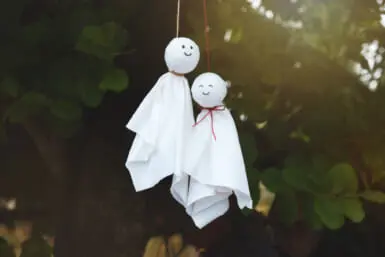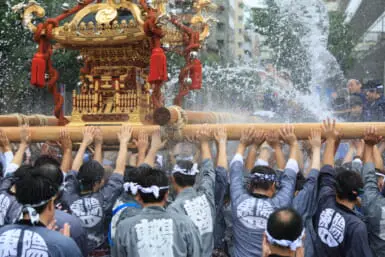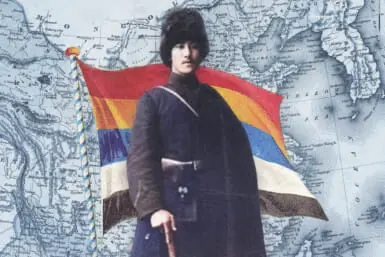by Kelly Wetherille
The year 1970, the same year Tokyo Weekender was founded, was an important year for Japanese fashion. The 70s were a time of huge economic growth in Japan, and high levels of personal consumption fueled the rise of a new crop of influential Japanese fashion designers who had studied and perfected their craft overseas. It was 1970 when Issey Miyake returned to Japan from New York, where he had designed under Geoffrey Beane, and established his design studio in Tokyo. Three years later he began showing his collections during Paris fashion week. Although the designer is now retired, his brand is still one of the most innovative in fashion, and head designer Dai Fujiwara continues to show his collections in Paris, alongside brands such as Chanel and Dior.
Also in 1970, Kenzo Takada established The House of Kenzo in Paris, where he too began showing his collections. His boutique, called Jungle Jap, quickly became popular with models of the day that were on the lookout for fresh, carefree clothes. He became known for his colorful, folkloric fashions with pretty floral prints on layers upon layers of fabric.
In 1975 Hanae Mori moved from New York to Paris, where she opened her maison de haute couture in 1977. These days the word ‘couture’ is thrown around rather carelessly, but in truth the only designers that truly do couture are those that have been accepted as members of the prestigious Chambre Syndicale de la Couture, the governing body of French fashion. Mori became the first Asian designer to be officially recognized as a designer of couture, and she continued to show her couture collection in Paris until she retired in 2004. Her designs were renowned for their East-meets-West sensibility; delicate kimono print fabrics combined with classic Western tailoring was her trademark.
Another Japanese designer who mixed Eastern and Western influences, although in a very different way, was Kansai Yamamoto. The designer, who started showing in Paris in 1975, was known for outrageous color, print and textile combinations. These included a graffiti print shirt over a mesh skirt, and satin pajamas and robes appliquéd with oversized Japanese figures. Perhaps best known for designing David Bowie’s costumes during his Ziggy Stardust and Aladdin Sane period, Yamamoto held huge fashion performance shows in the 1970s, often attracting up to 5,000 attendees.
The 80s saw the rise of deconstructed, avant-garde Japanese fashion, namely that of Rei Kawakubo and Yohji Yamamoto. Kawakubo challenged the notion that clothes had to be made to fit and flatter the body; instead she is a conceptualist who thinks of clothes as works of art. Her frayed knits, stitched together in seemingly careless, rough and haphazard ways, were dubbed ‘post-nuclear chic’ by some critics when she began showing her collection in Paris in 1981. Her label, Comme des Garçons, still has a loyal following today, and Kawakubo continues to challenge the boundaries of fashion. Her latest projects include a Beatles fashion line and a new retail concept in Omotesando, called Trading Museum. The space is part boutique and part gallery, with an eclectic mix of clothing, accessories and objects for sale or display.
Yohji Yamamoto, who also made his Paris debut in 1981 (incidentally, he and Kawakubo were dating at the time), was called “one of the most important and influential fashion designers working today” in Fashion Now 2, published by Taschen in 2008. His all-black, asymmetric silhouettes were already a commercial success in Japan, and gained a following overseas among young creative types, despite being callously named ‘Hiroshima chic’ by the establishment. His designs are still held in high esteem among the fashion world, but aggressive international expansion led him to file for bankruptcy last October. A Japanese investment firm swept in to bail out the company, and Yamamoto assured fans that he plans to continue designing until he dies.
In the early 1990s the economic bubble burst, giving rise to a trend of casual and street fashion offered at affordable prices. Suddenly the young and stylish were no longer flocking to the luxury stores in Ginza, but were seen combing the streets of Shibuya. Shibukaji, or Shibuya casual, became the look du jour. This was also the time when the kogyaru (high school girls with loose socks) were seen packing the trains, and dark makeup or tanned skin gained popularity in Shibuya. International media turned its radar on both Shibuya and Harajuku, recognizing these areas as being the birthplace of several street fashion trends. Shibuya 109, which was opened in 1979 to target women in their 30s, began attracting a much younger clientele, and brands such as Moussy, Cecil McBee and Egoist became popular among women in their teens and 20s, marking the rise of so-called maru kyuu (short for 109) fashion.
But not all types were accommodated by this new trend of street and casual fashion. The 90s made shoppers more price conscious and savvy, and many began looking to splurge on that one special item. Issey Miyake, always the innovator, launched a diffusion line, called Pleats Please, in 1993. The line made use of a new pleating technique Miyake had developed, in which garments are constructed first, before being sandwiched between layers of paper and fed through a heat press, which creates semi-permanent pleats that remain in the fabric even after washing. Another Miyake invention came in the form of 1998’s A-POC, meaning ‘a piece of cloth.’ Miyake himself described the technique best when he said, “I have endeavored to make fundamental changes to the system of making clothes. Think: a thread goes into a machine, that in turn generates complete clothing using the latest computer technology and eliminates the usual needs for cutting and sewing the fabric.”
The dawn of the 21st century has seen Japanese fashion branch out in all directions. More Japanese designers than ever, including Tsumori Chisato, Junko Shimada and Atsuro Tayama, are now participating in the Paris fashion shows, making Japanese fashion increasingly international. The local Japan Fashion Week, with support from the government, has also been growing and attracting more attention since the middle of the last decade. And perhaps most significantly, the Tokyo Girls Collection was launched in 2005, quickly growing into the world’s largest interactive fashion event. The show is open to the public, and guests have the opportunity to purchase styles via mobile phone as they go down the runway.
There is no telling what in which direction Japanese fashion will head during the decade of the 10s, but if the past 40 years are any indication, one thing is sure: it will be innovative, original, and will always keep consumers and fashion followers guessing.








